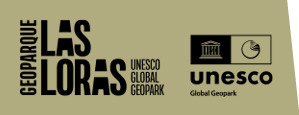Humada-Peña Amaya Crag SPA
Environmental conservation is being currently demanded by society to its politicians.
Until quite recently this idea was regarded as the conservation of some animal and plant species and a few ecosystems. At present, nevertheless, this concept has been significantly broadened and some elements beyond the traditionally so-called “Nature” were included.
The first conservation examples taken were the protection of specific animal species and the designation of the first National Parks.
Technical details:
Name: Humada-Peña Amaya
Region: Burgos
Surface: 39.845 Ha.
Referenced sites: Humada, Basconcillos del Tozo and Rebolledo de la Torre.
Habitats: Rock formations and moorlands.
Species which contributed for SPA designation: Egyptian Vulture, Griffon Vulture, Hen Harrier and Montagus Harrier.
Other species of interest: Golden Eagle, Peregrine Falcon, Eagle Owl, Chough, Alpine Chough and Rock Thrush.
Best time to visit: spring and autumn
Description Humada -Peña Amaya SPA.
This area of about 400 km2 is situated to the northwest of Burgos and bordered to the west by Palencia. It is a territory of transition between the mountainous terrain of the Cantabrian Mountain Range foothills and the high moorlands in the north of the region.
Its terrain is quite homogeneous (99 to 1300 metres high) with wide surfaces of flat topography and an area of rugged terrain around the Amaya Massif (the highest point in Peña Amaya Crag, 1362 m) with limestone escarpments and plenty of rocky outcrops. There are oak and holm oak forests on the slopes, pastures and scrub on the barrens and on those areas which suffered more changes we can find pine forests and scrub.
On the lowland there are agricultural fields with rainfed crops and vegetable gardens next to the villages. Some of the rivers of the region and their tributaries form ravines which are sometimes very deep. To the northwest it is bordered by “Alto Ebro and Rudrón Gorges” SPA.
Ornithological importance:
The populations of birds of prey and other species related to rocks (mainly the Egyptian and Griffon Vultures) are the focus in this protected area. Populations of birds related to barrens such as the Hen and Montagus Harriers are also important.
Important species:
Egyptian Vulture: Area of special interest for the species breeding. Thirteen pairs have been recorded in 2000. It is a population of national and international importance. The area is not only used for feeding by breeding animals but also by those migrating or coming from near breeding territories.
Griffon Vulture: Nesting area of special interest for the species. One hundred seventy five pairs have been recorded in 1999. National and international importance.
Hen Harrier: Breeding area with a population of about four to six pairs in 2002, meaning international relevance.
Montagus Harrier: Breeding area with a population of about fourteen to sixteen pairs in 2002, meaning international relevance.
Golden Eagle: Breeding area of special importance with a population of five pairs in 2000. Non-breeding and adult birds coming from near breeding territories use the area to hunt.
Bonelli’s Eagle: Although the population has almost disappeared in the last years, this was a historical breeding area. There were three nesting pairs in the 80s and, in contrast, no pair in 2002. Since its extinction as breeding species in the area, there are only records of lonely birds.
Peregrine Falcon: Usual breeding area with a population of nine breeding pairs in 2002. There are also records of non-resident birds (juvenile and adult birds from near territories).
There is a possibility of some bustard pairs breeding in the area, which still needs to be confirmed.
Other species:
Breeding populations of Honey Buzzard, Black kite, Red Kite, Short-toed Eagle and Booted Eagle. Curlew, Eagle Owl (at least 12 pairs), Nightjar, Crested lark, Wood Lark, Tawny Pipit, Dartford Warbler, Red-backed Shrike, Chough and Ortolan Bunting, some of them surely present populations of interest. Two pairs of Black-winged Kite which may well breed in the area were recorded in 2000. Possible breeding area for Great Spotted Cuckoo and Kingfisher.
The breeding population of Alpine Chough is quite relevant (at least 25 pairs). Nesting area for Goshawk, Sparrowhawk, Alpine Swift (at least 25 pairs), Dipper, Redstart, Rock Thrush, Bullfinch, and Yellowhammer. This may be a breeding area for Marsh Tit and wintering area for Wallcreeper.
ATTENTION: you are at a SPA (Special Protection Area). You should walk quietly in order not to disturb birds living at this place. The information given is taken from the Regional Government of Castile and León website (www.jcyl.es) regarding Humada Peña Amaya Crag SPA.
